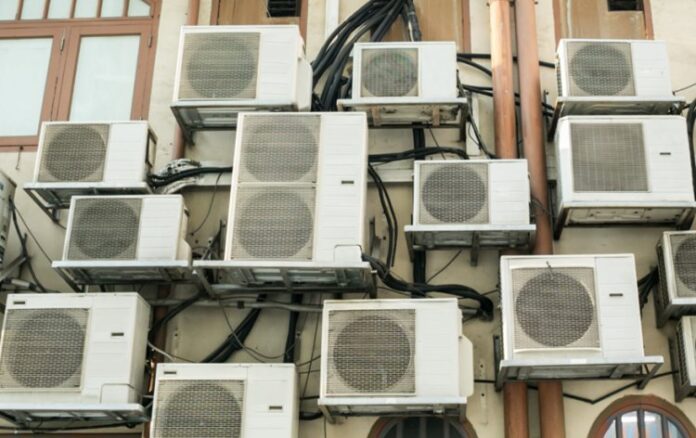New Delhi (India): A recent study by the India Energy and Climate Center (IECC) at the University of California, Berkeley, has revealed that India could prevent severe power shortages and save consumers up to ₹2.2 lakh crore ($26 billion) by doubling the energy efficiency of room air conditioners (ACs) over the next decade.
The report highlights that India adds 10 to 15 million new ACs annually, with an estimated 130 to 150 million additional units expected to be installed by 2035. However, without policy intervention, AC usage alone could drive peak power demand up to 120 GW by 2030 and 180 GW by 2035—nearly 30% of the projected total demand.
Policy Measures to Prevent Power Crisis
To mitigate these risks, the study recommends updating India’s Minimum Energy Performance Standards (MEPS), starting with a 2027 revision that would raise the 1-star label to ISEER 5.0—equivalent to today’s 5-star rating. Additionally, it suggests tightening efficiency standards every three years.
Implementing these updates could prevent:
✅ 10 GW of power shortages by 2028
✅ 23 GW by 2030
✅ 60 GW by 2035 (equivalent to 120 large power plants)
“This growth is outpacing India’s power supply and could lead to serious electricity shortages as early as 2026,” said Nikit Abhyankar, lead author of the study and faculty at UC Berkeley.
“Without intervention, we risk blackouts or costly emergency fixes. But with smart policies, we can turn this into a win for consumers, manufacturers, and the power grid.”
Efficient ACs: A Cost-Effective Solution for Consumers
While high-efficiency ACs may have slightly higher upfront costs, the study suggests that consumers can recover these costs within 2-3 years through lower electricity bills. Net savings from efficient ACs could range between ₹66,000 crore to ₹2.25 lakh crore ($8-26 billion) by 2035.
“A common concern with efficient ACs is their price,” said Amol Phadke, co-author and UC Berkeley faculty.
“But our global market analysis—including India—shows that efficiency is not the primary factor affecting retail prices. With the right policy support, higher efficiency can actually reduce costs due to economies of scale, better supply chains, and market competition.”
Indian Manufacturers Leading the Efficiency Shift
The study found that over 600 AC models—about 20% of all offerings in India—already exceed the country’s top efficiency standard (5-star rating). Many of these are produced by domestic manufacturers, positioning India as a leader in sustainable cooling technology.
“This is a chance for Indian manufacturers to lead,” said Jose Dominguez, co-author and IECC researcher.
Customized Cooling Solutions for India’s Climate
The report also highlights the need for updated AC testing procedures to better reflect India’s humid climate, where comfort is influenced not just by cooling but also by moisture removal.
“In places like Mumbai or Chennai, dryness is as important as coolness,” said Nihar Shah, co-author and IECC’s lead on cooling solutions.
“ACs that remove moisture can keep people comfortable while using only half as much electricity. Efficient dehumidification is a critical challenge for the industry.”
A Sustainable Future for India’s Cooling Needs
With rising temperatures and increasing AC adoption, India has a unique opportunity to implement energy-efficient policies that benefit consumers, reduce peak power demand, and strengthen domestic manufacturing.
By prioritizing AC efficiency upgrades, India can ensure a sustainable, affordable, and reliable energy future, while significantly reducing electricity costs for millions of households.


